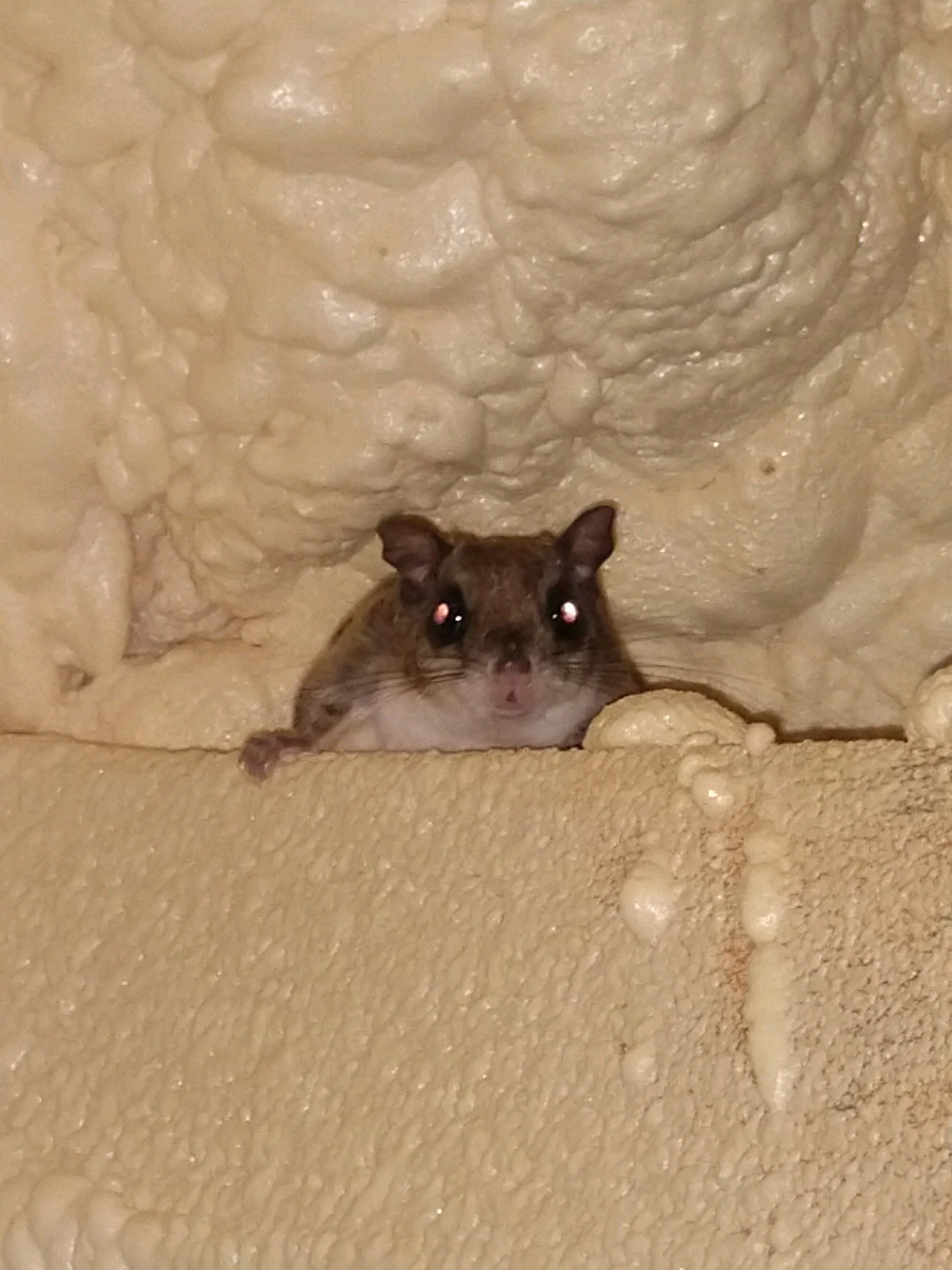Southern flying squirrel (Glaucomys volans)
Southern flying squirrels, which are also called assapans, are similar in length to the fox squirrel, with have grey and/or brown fur on top with darker colors on their sides and lighter colored fur on the underside. They are distinguished by a membrane called a patagium, extending between front and rear legs, that allows them to "fly" (glide, really) through the air for a short distance. Unlike many other squirrels, the southern flying squirrel is more active at night than in the daytime. Their diet includes fruit, buts, mushrooms, fungi, dead animals, eggs, and flowers.
Breeding occurs twice each year, yielding 2-7 young in each litter over a period of 40 days gestation. Southern flying squirrels are born blind for up to the first month of life. Females are able to find their young and their buried food stores accurately even after travelling as much as 1.2 miles away. Males tend to have a larger home area than females, up to 80,000 square meters.
Disease is a particular risk associated with the southern flying squirrel, as it has been linked to transmission of epidemic typhus in humans. Their feces hosts bacteria that can become airborne and easily come into contact with humans, our food, and the air we breathe. This is made especially dangerous when they inhabit an attic space near air ducts or vents.


